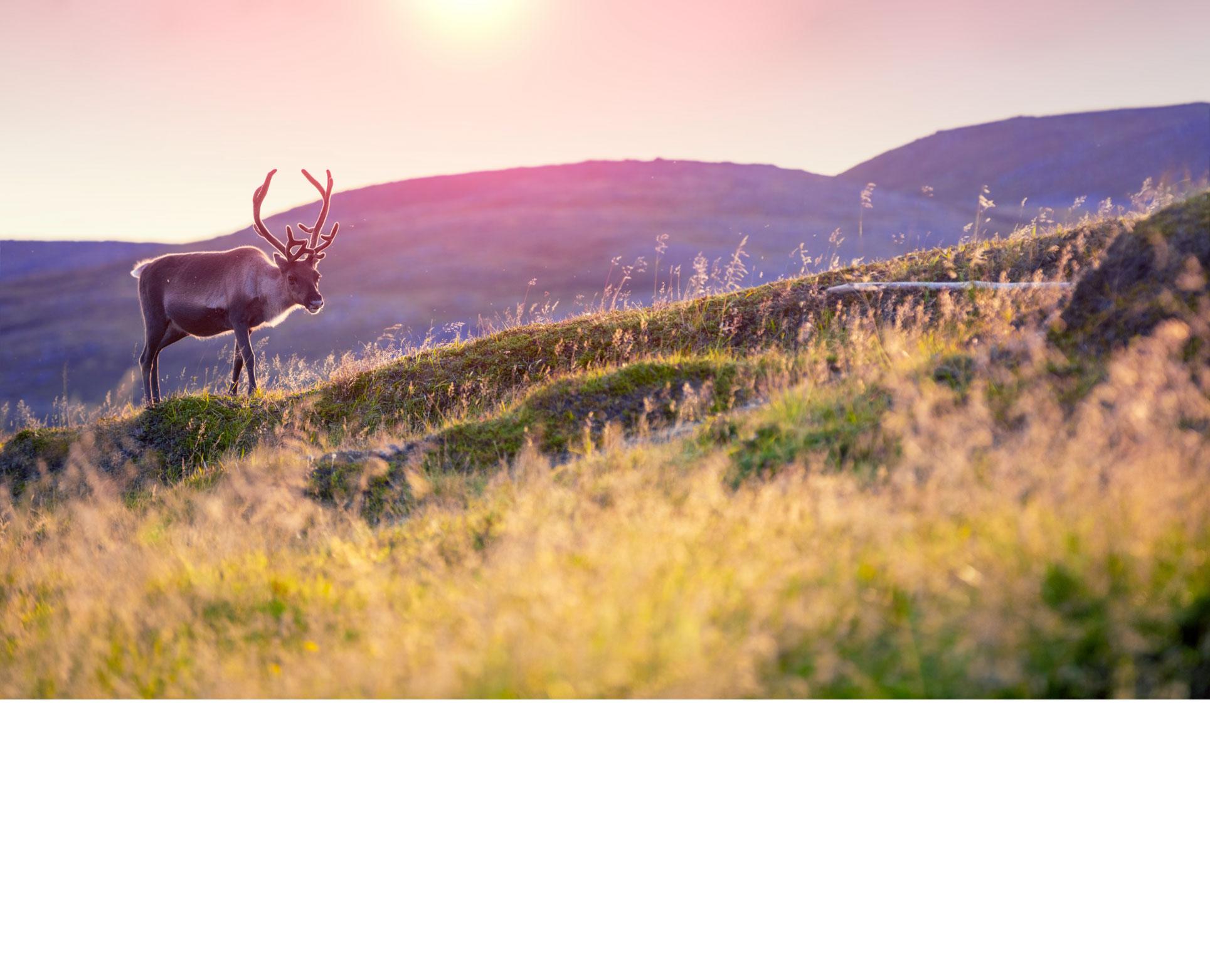
Boosting nutrition with reindeer meat
Boosting nutrition with reindeer meat

If you want to eat healthily and include red meat in your diet, reindeer meat is an excellent option. The meat of semi-wild reindeer, raised and grazed in the Lapland wilderness, has particularly good nutritional properties.
Low-fat and protein-rich
Reindeer meat, like meat products in general, is an excellent source of protein. Due to its low fat content, reindeer meat is even better in this regard, with its protein content ranging from 20 to 24 g/100 g of reindeer meat. The leanest cuts, such as fillets and roasts, are the most protein-rich.
In dried and cold-smoked reindeer meat products, the amount of protein in the final product increases relative to cooking loss. Traditional dried meat contains up to 50-65% protein, and cold-smoked reindeer roast contains up to 25-35%. Lean reindeer meat is particularly suitable for these processes because the fat content would also increase with the cooking loss.
In practice, this means that as liquid evaporates, the concentration of macronutrients (proteins, carbohydrates, and fat) in the final product increases.
The same rule applies to cooking meat at home. When you fry meat in a pan, liquid evaporates continuously. However, meat inherently contains about 70% water. With the right cooking instructions, you can ensure that the meat remains juicy.
Reindeer meat is rich in minerals and trace elements.
Reindeer meat, which has grazed freely in the wild, contains a particularly high amount of minerals and trace elements compared to intensively farmed meat. Reindeer meat is rich in minerals such as iron and selenium. 100 grams of reindeer meat already provides nearly half of the daily iron requirement! Reindeer liver contains about ten times more iron than reindeer meat, making it an excellent source of iron even in small portions. 100 grams of reindeer meat also covers the daily selenium requirement. In addition to minerals and trace elements, reindeer meat is rich in vitamins B6 and B12.
Semi-wild reindeer roam and move in nature, foraging for food and seeking the most favorable living conditions. This results in a very low fat content in reindeer meat. The ratio of fatty acids in reindeer meat is favorable for nutrition. The fat content of reindeer meat varies, depending on the part of the carcass, between 2–10 g/100 g. In terms of fatty acids, both monounsaturated and polyunsaturated fats are proportionally higher in reindeer meat compared to other red meats. Unsaturated fats are known as “soft” fats, while saturated fats, known as “hard” fats, can raise blood cholesterol levels.
Reindeer meat has a fine texture, making it tender and quick to cook. Its delicate gamey flavor adds sophistication to its taste. Due to its structure, reindeer meat is also easily digestible. You can enjoy reindeer meat with a clear conscience!
We collected nutritional data from Fineli for reindeer meat, as well as for beef and pork.
See the table from here
Sources:
- Fineli, the National Food Composition Database maintained by the National Institute for Health and Welfare.
- Niemi, Milla: Literature Review. Composition of reindeer meat and reindeer milk. University of Helsinki, Department of Food Technology.
- Finnish Food Authority (Ruokavirasto), visited on February 8, 2021.
- EU Register of nutrition and health claims made on foods (v.3.5)
- Duodecim Health Library, visited on February 8, 2021.
- Radiation and Nuclear Safety Authority (Säteilyturvakeskus), visited on February 8, 2021.
The trace elements and vitamins contained in reindeer meat are good for your health:
- Iron is an essential trace element for the body, which maintains, among other things, the production of red blood cells and a good level of hemoglobin. It affects the transport of oxygen in the body and the maintenance of the immune system. Iron also has an impact on normal cognitive functions, and its deficiency can lead to fatigue.
- Selenium protects cells and has a beneficial effect on, among other things, maintaining the condition of hair and nails. Additionally, it helps to maintain the immune system and thyroid glands.
- B6 and B12 vitamins are essential nutrients in our energy-producing metabolism. They affect, among other things, the formation of red blood cells and the functioning of the immune system, as well as reducing fatigue.
- Finnish reindeer meat does not contain harmful amounts of heavy metals or radioactive compounds. These factors are closely monitored in food production – as is done by Lapin Liha – to ensure safe and healthy products for our customers.
- Metals occur naturally in the soil, from which they are absorbed by plants and subsequently enter animals through the food chain. Maximum allowable levels for metal content in food products have been established to ensure that exposure remains within safe limits. Food producers monitor these levels through their internal quality control systems to comply with regulatory standards and ensure consumer safety.
- Naturally occurring radioactive substances are also a part of the human environment. For example, the ground beneath our feet emits radiation, known as natural background radiation.

